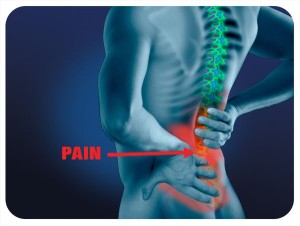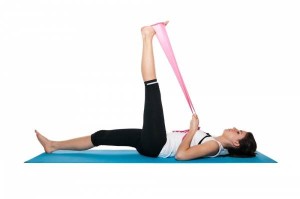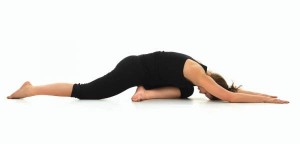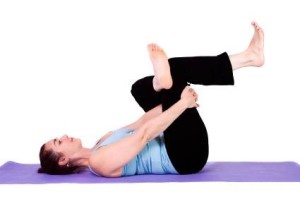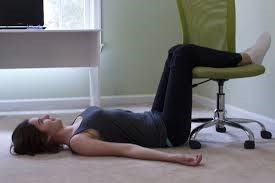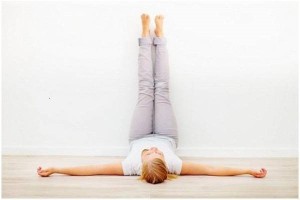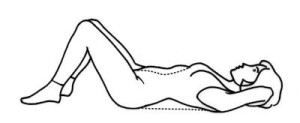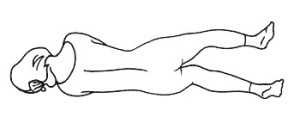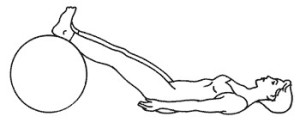It is possible for anyone to hurt your back when you lift, reach, or twist. In fact, lower back pain is one of the most common injuries, regardless of age, size and health.
A sedentary lifestyle, for example office workers, go through an arduous marathon of sitting every day. If we look at it from an anatomical standpoint, we realise the hamstring muscles and the iliopsoas muscles are shortened from the many hours of sitting and this causes strain on the lower back.
Do not be mistaken that athletes, who are generally healthier and more physically active than non-athletes, would be less susceptible to lower back pain. Any weight-bearing movement such as running, jumping, or rapid dynamic movements produces tension on the lower back. When these activities are repeated over time without care, these muscles generally become tight and overuse injuries may occur.
Given the high prevalence of lower back pain, many seek self-treatment options that cost almost nothing. For lower back relief try the following stretches and strengthening exercises daily or at least after your workout. Breathe deeply in and out of the nose while doing these poses.
Stretches
Supine Hamstring Stretch
Lying on your back, bend your right knee into your chest and place a strap or rolled-up towel around the ball of your foot. Straighten your leg toward the ceiling. Press out through both heels. If the lower back feels strained, bend the left knee and place the foot on the ground. Hold for 3-5 minutes and then switch to the left leg for 3-5 minutes.
2A. Pigeon
From all-fours, bring your right knee behind your right wrist with your lower leg at a diagonal toward your left hip. Square off your hips toward the ground. Bend forward. Widen the elbows and place one hand on top of the other as a pillow for your forehead. Hold 2-3 minutes and then switch to the left side for 2-3 minutes.
CAUTION: If you have a slipped disc in the lower back, please avoid all deep forward bends as these can make your condition worse. Also, if pigeon pose bothers your knees, then do Thread the Needle (refer to 2B).
2B. Thread the Needle
Lying on your back, bend both knees with the feet flat on the ground. Bend the right knee like a figure four, with the outer left ankle to the right thigh. Lift the left foot into the air, bringing the left calf parallel to the ground. Thread your right hand between the opening of the legs and interlace your hands behind your left thigh. Hold 2-3 minutes and then repeat on the other side.
3A. Legs On A Chair
Lie on your back with both legs bent at right angles on a chair or block. You can just rest your hands on your stomach or lay your arms out at the side below shoulder level, palms facing up. Breathe from your stomach. Let the lower back relax. Hold for 5-10 minutes.
3B. Legs Up the Wall
Scoot your buttocks all the way into the wall and swing your feet up the wall. This pose is excellent for relaxing the muscles of the lower back and drains stagnant fluid from the feet and ankles. Do this pose after a challenging workout and always after traveling by plane. Hold for 5-10 minutes. Note: As this requires good hamstring flexibility, perform this exercise only if you can perform exercise 4A (above) with ease.
Strengthening Exercises
- Pelvic Tilt
An active exercise from one position where the abdominal muscles are isolated and used to move the spine. Lay on the floor with knees bent and feet flat on the floor. Tighten abdominal muscles and pull the lower back to the floor. Hold for 10 seconds. Do 3 to 5 repetitions.
- Arm/Leg Raises
A more dynamic exercise introduces movement of the arms and/or legs to challenge the neutral spine; this exercise is for the hip abductors. Lie on one side with lower arm bent under head and upper arm resting with hand on floor near chest. Bend both knees and flex hips and find neutral spine position. Slowly raise upper leg 8 to 10 inches and lower. Do 5 to 10 repetitions and repeat on opposite side.
Caution: Do this exercise only if you are able to do exercise no. 1 without any unnecessary pain.
- Exercise Ball Bridges
An advanced stabilisation exercise that introduces unpredictable movement that must be responded to (the movement of the ball). Lay on floor with both feet propped up on the exercise ball with legs straight and arms relaxed to the sides. Find the neutral spine position and hold while slowly tightening the buttock muscle to lift the buttocks off the floor 2 to 3 inches.
Caution: Do this exercise only if you are able to do exercises no. 1 and 2 without any unnecessary pain.
References
http://www.webmd.com/back-pain/tc/low-back-pain-topic-overview
http://breakingmuscle.com/yoga/heal-your-lower-back-pain-with-these-5-yoga-poses?page=0,1
http://www.pro-tecathletics.com/59057/Back-Pain.html
4 (Rarely Used) Things You Can Do Right Now For Lower Back Pain Relief
http://www.spine-health.com/wellness/exercise/lumbar-spine-stabilization-exercises
